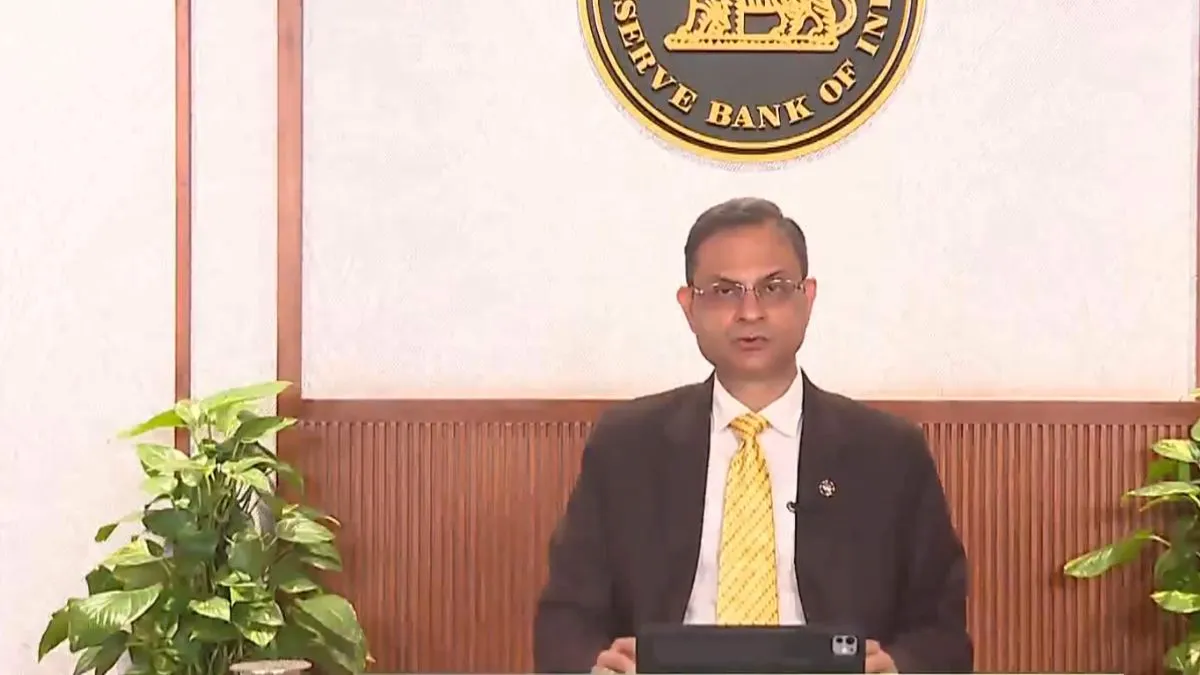- By Nidhi Giri
- Wed, 01 Oct 2025 11:07 AM (IST)
- Source:JND
RBI MPC Meeting: The Reserve Bank of India (RBI) has decided to keep the repo rate unchanged at 5.5 per cent. The decision was taken at the fourth bi-monthly meeting of the Monetary Policy Committee (MPC) for FY26 on Wednesday, chaired by RBI Governor Sanjay Malhotra. The RBI had already cut the repo rate by a total of 1 per cent in 2025. Governor Sanjay Malhotra, while announcing the policy, said the RBI's stance would remain "neutral."
What It Means For Home Loan Borrowers
Any sort of increase in repo rate would have meant higher EMIs (Equated Monthly Instalments) as most of the home loans are now based on external benchmarks, such as the repo rate. By keeping the rate unchanged, the RBI has made sure that the existing EMIs do not see a rise.
ALSO READ: US Government Shutdown Begins As America Faces New Period Of Uncertainty; Big Layoffs Likely To Hit
NRIs Abroad Will Get Loan In Rupees
RBI has announced that banks in Bhutan, Nepal and Sri Lanka will now be able to provide loans to Non-Resident Indians (NRIs) in Indian Rupees. It is proposed to expand the services for Basic Savings Bank Deposit account holders to include digital banking services like mobile and internet banking without minimum balance charges.
No Change For Second Time In A Row
The repo rate has remained unchanged for the second consecutive time, following three cuts totaling 100 basis points (1 per cent) in February, April, and June, 2025. The RBI has kept the Standard Deposit Facility (SDF) rate unchanged at 5.25 per cent. The Marginal Standing Facility (MSF) rate will remain at 5.75 per cent.
Impact Of GST Reforms On Inflation
Governor Sanjay Malhotra stated that the growth-inflation dynamics have changed since the August policy. The RBI has lowered its average inflation forecast for FY26 to 2.6 per cent from the previous 3.1 per cent.
'Effects Of Interest Rate Cuts Are Beginning To Be Seen': Governor
According to the RBI Governor, the overall inflation outlook has improved due to a significant decline in food prices. He stated that the effects of interest rate cuts are beginning to be felt. External uncertainties, including tariffs, could slow export growth and impact the outlook.
According to Governor Malhotra, the Indian economy continues to remain strong and domestic growth momentum will continue in the second quarter. He said the MPC considers it prudent to wait for the impact of recent policy measures to be fully realized before considering further steps.
'Rupee Movements Are Being Closely Monitored'
The RBI governor said India's foreign exchange reserves stand at USD 700.2 billion, enough to cover 11 months of imports. Strong remittance flows are expected to help keep the current account deficit at a sustainable level in the current fiscal year.
The RBI governor said the central bank is closely monitoring the rupee's movements amid market volatility. He added that the reduction in the cash reserve ratio (CRR) will improve liquidity in the banking system, easing debt flows and promoting financial stability.
The RBI Governor stated that despite some depreciation in the rupee, India's external sector remains resilient, reflecting volatility. He assured that the Reserve Bank is closely monitoring the situation and will take necessary steps to maintain stability as needed.
Big Step Announced For Indian Banks
Measures have been proposed to improve credit flow to the real economy, including a framework for Indian banks to finance acquisitions by Indian corporations of other companies. To improve the ease of lending, it is also proposed to remove regulatory limits on lending against listed debt securities. In the case of urban cooperative banks (UCBs), given the positive growth in the sector, the Reserve Bank is planning to license new UCBs. A discussion paper may be published beforehand.
